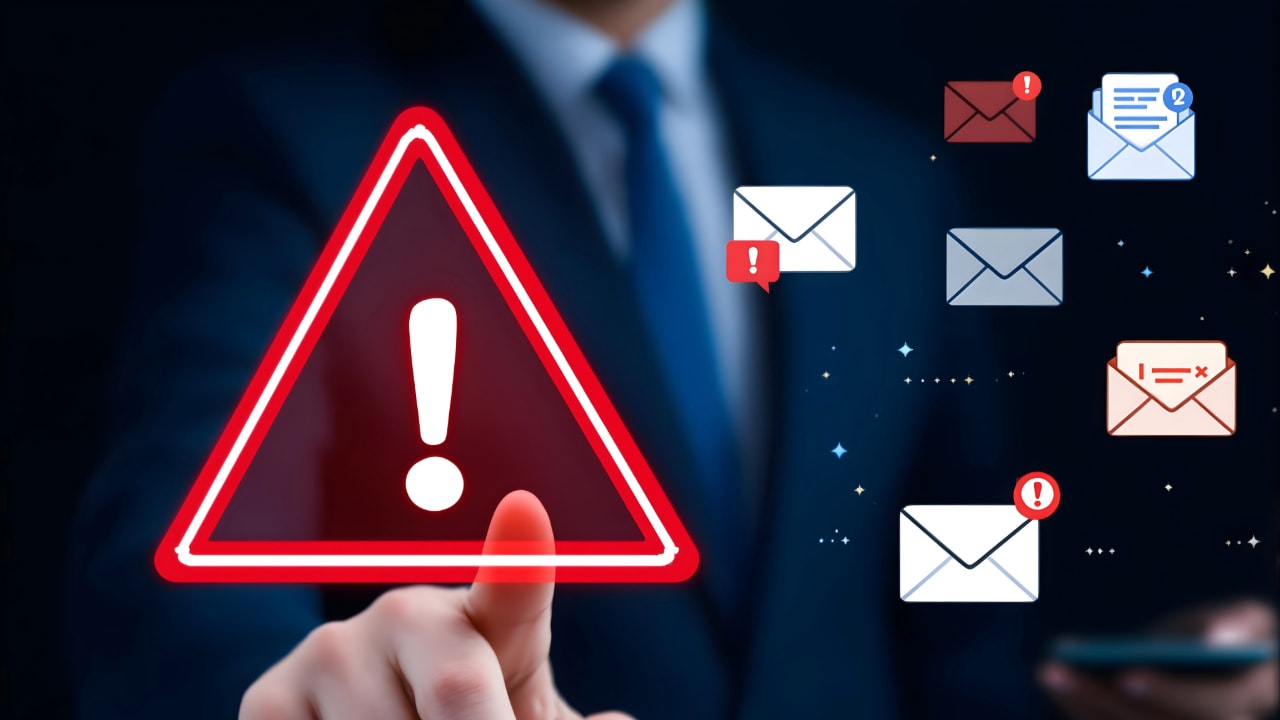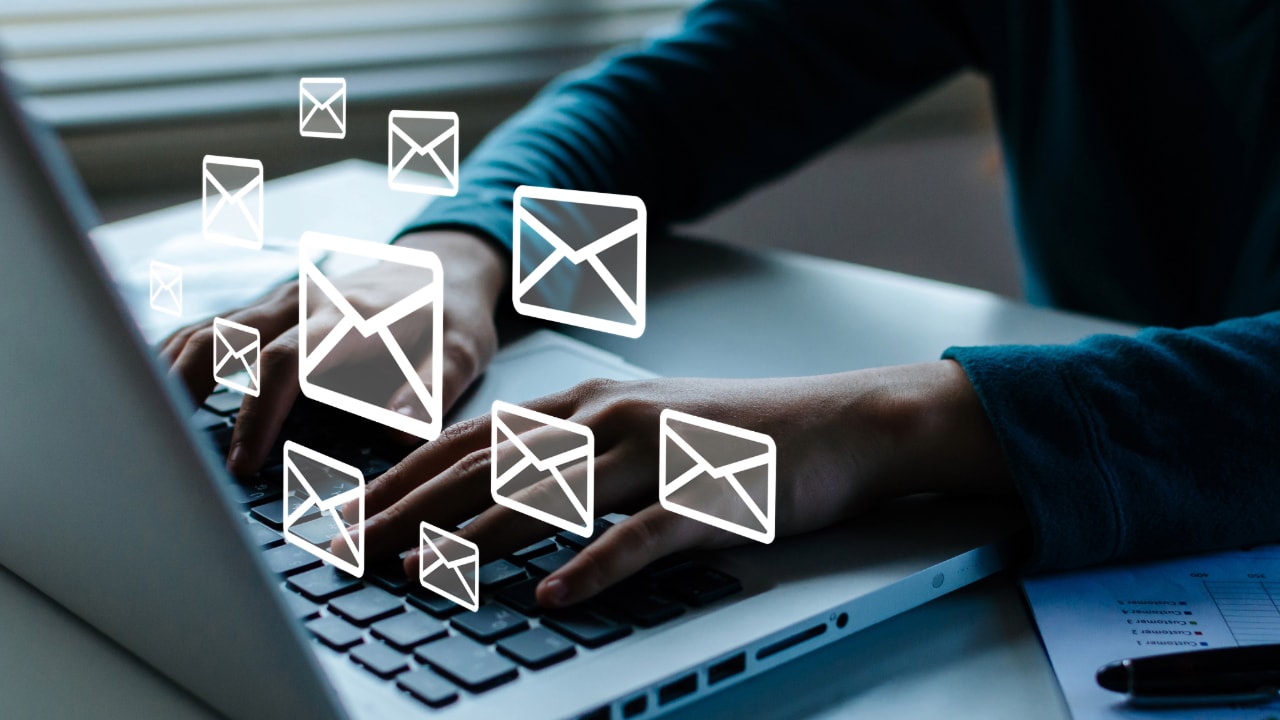DMARC Is No Longer Optional: What Business Owners Need to Know in 2025
May 22, 2025
Starting May 2025, the rules of email just changed—and it’s not just a mild suggestion this time. DMARC (Domain-Based Message Authentication, Reporting, and Conformance), is no longer optional. If your domain isn’t set up with it, you as the domain owner are not just risking email deliverability—you’re inviting fraudsters in through the front door.
Let’s break down what this means for your business, why it matters more than ever, and how you can fix it fast.
What Is Domain Based Message Authentication and Why Should You Care?
DMARC is a protocol that builds on SPF (Sender Policy Framework) and DKIM (DomainKeys Identified Mail). Together, they form a sort of email security trifecta. While SPF and DKIM signatures help authenticate messages, DMARC checks tell email receivers what to do if those checks fail—quarantine, reject, or do nothing.
In plain English: it’s how your business tells the internet, “These are my real emails. Reject the fakes.”
Without DMARC, your email domain is wide open to spoofing. That means cybercriminals can impersonate your business, scam your customers, and damage your reputation—without you even knowing it’s happening.
What’s Changed With Email in May 2025?
Major email providers including Google, Yahoo, and Microsoft are now enforcing DMARC requirements more aggressively. Domains without a proper DMARC policy may see their emails land in spam folders—or not land at all.
Here’s what that means for you:
-
No DMARC? Say goodbye to inbox placement, as your emails may not reach inboxes at all.
-
Poor configuration? Your email might look like a scam.
-
No visibility? You won’t even know what’s going wrong.
This shift reflects growing pressure to protect inboxes globally and clamp down on phishing. It’s about time. But it also means businesses need to catch up—fast.
What Happens If You Ignore DMARC and Phishing Attacks?

Short version: you lose trust, traffic, and conversions.
Slightly longer version:
-
Email spoofing opens you up to fraud.
-
You risk being blacklisted or flagged as unsafe.
-
Your marketing and transactional emails could quietly disappear.
-
Customers will stop trusting your domain.
-
You become a target for phishing campaigns, which can lead to significant financial and reputational damage.
If email is even remotely important to your operations (spoiler: it is), this isn’t something you can punt.
What Does DMARC Actually Look Like?
Here’s a basic DMARC TXT record:

-
v=DMARC1 indicates the DMARC version.
-
p=reject tells receivers to reject emails that fail checks.
-
rua is the address where failure reports (and other report types) get sent.
You can adjust the policy (p=none, p=quarantine, p=reject) based on how strict you want to be. But as of May 2025, major providers want you at least at quarantine, if not reject.
Forensic Reports and Email Security

Forensic reports provide detailed information about individual email messages that fail DMARC authentication, making them invaluable for investigating spoofing attacks. These reports help identify the sources of unauthenticated messages and optimize DMARC policies. Forensic reports also offer insights into the tactics and techniques used by attackers, enabling domain owners to enhance their email security measures. By analyzing forensic reports, domain owners can gain a deeper understanding of the threats they face and take targeted actions to improve email security. Additionally, forensic reports can serve as evidence of spoofing attacks, aiding domain owners in taking legal action against attackers. Utilizing DMARC authentication and forensic reports is essential for bolstering email security and reducing the risk of spoofing attacks.
Preventing Spoofed Email and Cyber Attacks
Preventing spoofed messages and cyber attacks requires a comprehensive approach that includes DMARC authentication, advanced email security solutions, and user education. Domain owners can set up DMARC records to dictate how unauthenticated messages should be handled and deploy email security solutions to detect and block spoofed emails. Educating users on how to recognize and report suspicious emails is also crucial in reducing the risk of phishing attacks. Additionally, domain owners can utilize DMARC reports to monitor email traffic and identify potential authentication issues. By adopting a proactive stance on email security, domain owners can significantly reduce the risk of spoofing attacks and safeguard their users from cyber threats.
But Isn’t DMARC Policy Setup Complicated?

That’s the excuse that used to work. Not anymore.
Modern tools (like ours) make it easy to set up DMARC for your custom domain. Just punch in your domain, and we’ll tell you exactly what’s wrong—and how to fix it.
✅ Start with an audit
Check your domain now with iO™ DMARC
Our iO™ DMARC Email Deliverability Tool will:
-
Check DMARC for missing or misconfigured DMARC records
-
Identify SPF/DKIM issues
-
Show whether your domain is vulnerable to spoofing
You don’t need to be a DNS wizard to fix any issues. The iO™ DMARC email deliverability tool will show you exactly what's wrong with your SPF, DKIM, and DMARC records.
What Does DMARC do for You?
Aside from not getting blacklisted?
-
Better inbox placement
-
Improved deliverability
-
Real-time spoofing protection
-
A safer experience for your customers
-
Enhanced brand trust
Not to mention, setting up DMARC is quickly becoming a compliance checkbox for data security audits, insurance underwriting, and vendor risk reviews.
How to Get Compliant with DMARC Reports Today

-
Run a Free Email Audit
-
Update Your DNS Records Add or fix your DMARC, SPF, and DKIM settings.
-
Monitor Your Reports Use your rua email to receive visibility into spoofing attempts and send aggregate reports.
-
Adjust and Harden Your Policy Start with none, then move to quarantine, and finally reject to make sure you don't lose any emails while you tighten things up.
-
Repeat Regularly Email security isn’t set-and-forget. Run audits quarterly at minimum and use a tool to monitor your changes.
-
Make SPF, DKIM, DMARC, & BIMI Management Easy with Input Output's iO™ DMARC email deliverability and security management tool
The Bottom Line
DMARC isn’t a “nice to have” anymore. As of May 2025, it’s mandatory if you want your emails delivered—and your brand protected.
Think of it like digital seatbelts. You wouldn’t let your team drive without them. Why send emails unprotected when you can stop email spoofing?
Whether you’ve never heard of DMARC before or just haven’t found time to implement it, now’s the time to act.
🔍 Check your email security today or
⭐️ Make DMARC setup and reports easy with iO™ DMARC
STAY INFORMED
Subscribe now to receive the latest expert insights on cybersecurity, compliance, and business management delivered straight to your inbox.
We hate SPAM. We will never sell your information, for any reason.
